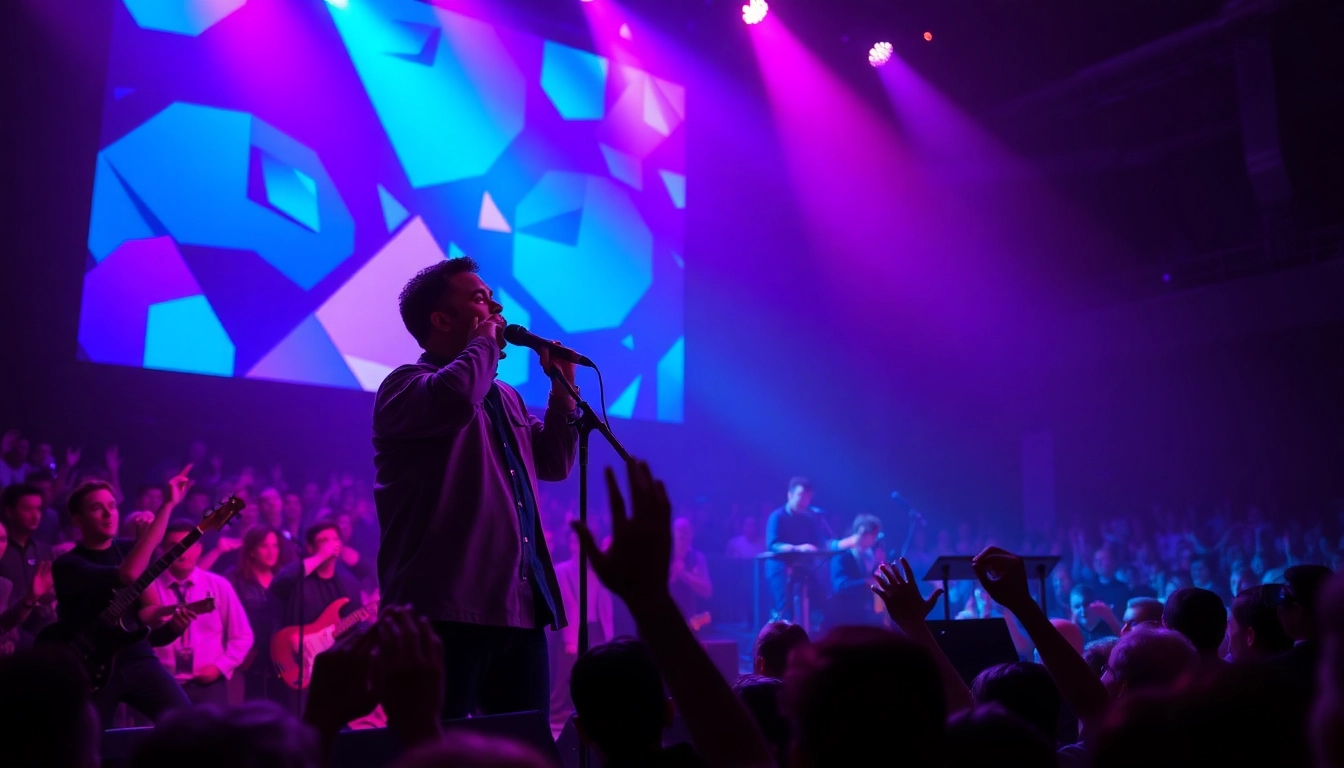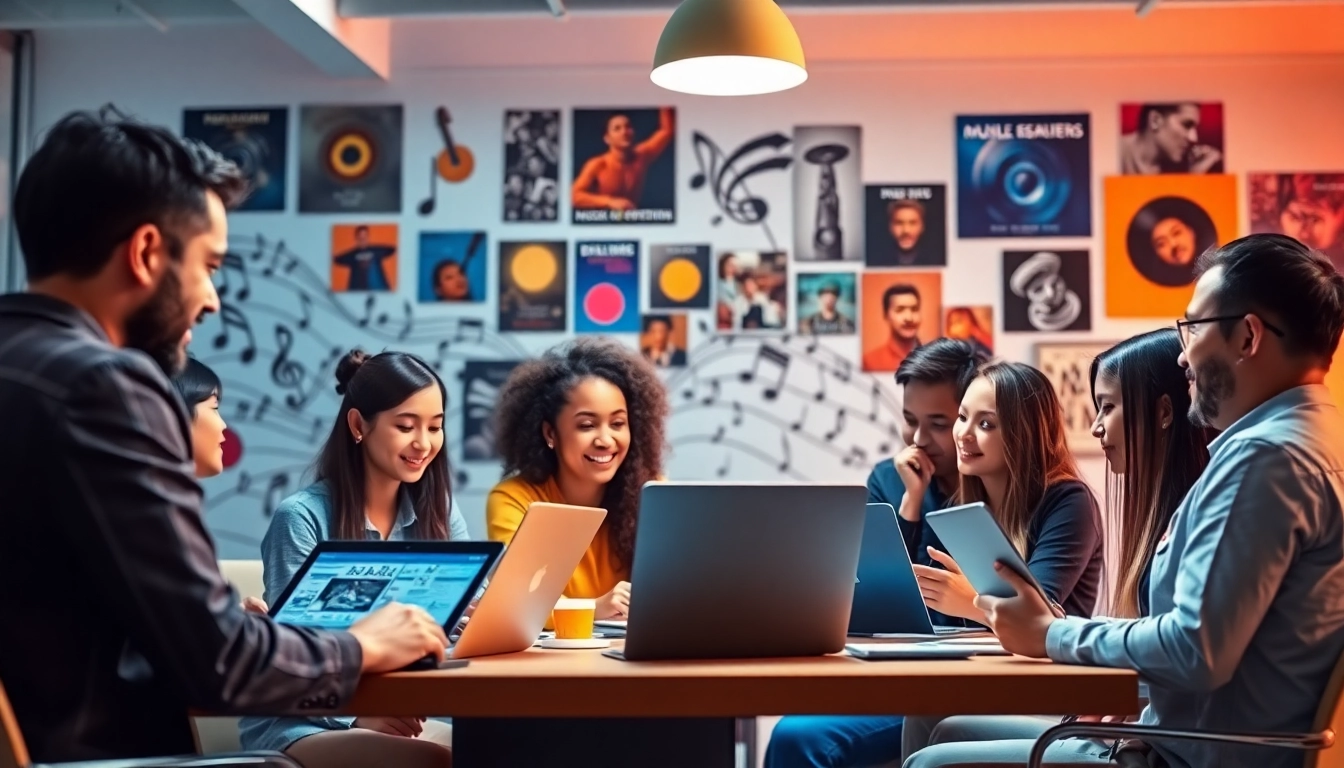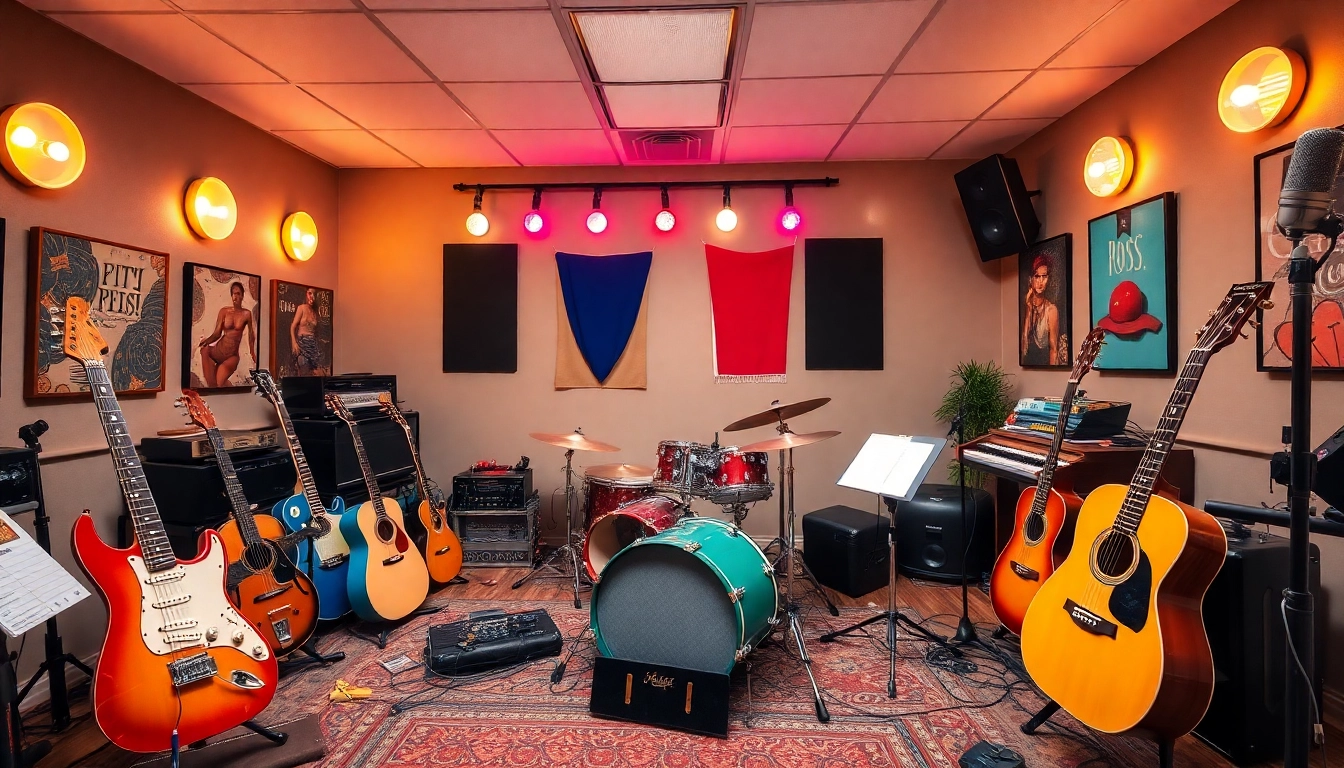Understanding Visual Aesthetics in Music
In today’s music industry, where auditory experiences are constantly paired with visual stimuli, the concept of Visual Aesthetics has gained prominence as a critical aspect in shaping both artist identity and audience engagement. Visual aesthetics refer to the intentional arrangement of visual elements—colors, imagery, typography, and graphic design—that accompany music and performances, constructing a holistic experience for audiences. As music consumption habits evolve with advancements in technology, the visual presentation of artists becomes increasingly essential not only for standing out in a competitive marketplace but also for enhancing the overall artistic narrative.
Defining Visual Aesthetics
Visual aesthetics can be described as the artistic principles that apply to visual presentation in music. This encompasses a broad range of elements, including album artwork, music videos, stage designs, promotional materials, and social media visuals. The onus is on the artist to convey their unique brand identity and creative message through these elements, significantly influencing how listeners connect with their art. Each component plays a vital role in the storyteller’s journey, allowing for nuanced interpretations of music, often transcending mere audio enjoyment.
Role of Visual Aesthetics in Music
The role of visual aesthetics in music extends beyond mere decoration. It creates context and adds layers of meaning to the auditory experience. The relationship between sound and visuals can evoke specific emotions, triggering memories and associations that enhance the listener’s connection to the music. For instance, artists like Billie Eilish are known for their distinctive visual styles, which complement their unique sound, creating a cohesive brand that resonates deeply with fans.
Influencing Audience Perception
The impact of visual aesthetics on audience perception is profound. A well-crafted visual narrative can captivate attention and cultivate a sense of loyalty among listeners. Research has shown that visuals can significantly affect the way people interpret music. For instance, bright and cheerful colors may lead to a more positive reception of upbeat tunes, while darker hues might enhance the emotional depth of melancholic ballads. In a digital landscape saturated with content, artists who effectively integrate visual aesthetics are more likely to pique interest and hold audience attention.
Strategic Application of Visual Aesthetics
Designing a Visual Identity
Establishing a visual identity is a foundational step for any artist looking to leverage the power of visual aesthetics. This identity should authentically reflect the artist’s music style, themes, and personal brand. Artists can begin by defining their core message and how they want to be perceived. Elements such as logos, fonts, and imagery should all harmonize to reinforce this identity. For example, the visual identity of an intense metal band will likely starkly contrast with that of a soft indie-pop artist, signaling distinct emotional landscapes to the audience.
Choosing Color Palettes
Color theory plays a crucial role in visual aesthetics. Colors can invoke emotions and set the tone for a listener’s experience, impacting how music is felt and interpreted. When selecting color palettes, artists should consider their musical genre, themes, and target audience. Warmer tones might evoke feelings of warmth and happiness suitable for pop music, while cooler tones may convey somberness appropriate for genres like classical or ambient music. Creating consistency across all visual platforms—from album art to social media—is key to reinforcing brand recognition and message clarity.
Incorporating Visual Elements in Performance
Visual elements don’t just stop at album art and online presence; they extend directly into live performances. Incorporating visuals can transform a concert into an immersive experience. This includes leveraging lighting, backdrops, costumes, and multimedia presentations during the show. For example, artists like Daft Punk use elaborate light displays and visual storytelling to elevate their performances, creating a multi-sensory experience that is truly memorable. Planning these elements requires foresight and creativity but can significantly impact audience engagement and satisfaction.
Case Studies: Success Stories in Visual Aesthetics
Analyzing Successful Artists
Several artists have redefined the intersection of visual aesthetics and music, setting benchmarks that others aspire to reach. Taking Lady Gaga as a prominent example, her incorporation of fashion, performance art, and symbolic visuals continually challenges conventional norms. Her elaborate costumes and theatrical music videos have created a distinct identity, generating a passionate following that extends beyond her musical output.
Comparing Visual Strategies
Comparative analyses of artists’ visual strategies reveal varying approaches based on genre and target audience. For instance, country artists often invoke nature and nostalgia in their visuals, reinforcing themes of simplicity and authenticity, while hip-hop artists may embrace bold lettering, urban motifs, and striking colors to convey confidence and cultural relevance. These strategies reflect a deep understanding of how visual presentation aligns with the underlying messages of the music.
Lessons Learned and Best Practices
From these success stories, valuable lessons can be drawn for emerging artists. The importance of consistency is paramount—ensuring that visual aesthetics align with musical themes enhances coherence. Engagement with audiences through behind-the-scenes content can also foster a more intimate connection. A practical best practice is to engage visual artists and graphic designers who resonate with the artist’s vision, providing professional expertise that can elevate the overall presentation.
Measuring the Impact of Visual Aesthetics
Audience Engagement Metrics
Measuring the effectiveness of visual aesthetics involves analyzing audience engagement metrics. Platforms like Instagram and TikTok provide insight into how visuals impact audience interaction through likes, shares, and comments. Metrics such as viewer retention during music videos can indicate whether the visual elements are compelling enough to maintain viewer interest. The correlation between visual engagement and increased streaming numbers provides a direct line between aesthetics and commercial success.
Brand Recognition Studies
Brand recognition studies further analyze the impact of visual aesthetics on audience recall. Artists can conduct surveys or utilize digital tools to assess how well audiences remember their visual identity compared to competitors. By understanding which visuals resonate most strongly, artists can adapt their branding strategies to enhance recognition and foster a lasting impression in the minds of their listeners.
Performance Analysis Tools
Performance tools such as Google Analytics, social media insights, and audience feedback platforms can provide data-driven insights about the effectiveness of visual aesthetics. Studying audience demographics and geographic data can reveal trends and preferences, shaping future visual content production. Artists who actively engage in this analytical process can fine-tune their visual strategies, ensuring alignment with audience expectations and maximizing impact.
Future Trends in Visual Aesthetics
Emerging Visual Technologies
The future of visual aesthetics in music promises to be heavily influenced by technological advancements. Augmented reality (AR) and virtual reality (VR) are becoming more integrated into live performances, creating fully immersive environments for audiences. As these technologies evolve, they provide unique platforms for artists to express their creativity, allowing for unprecedented interactions between performer and audience.
Predictions for Live Performances
Looking ahead, live performances are likely to become multi-dimensional experiences, blending traditional music with cutting-edge visual art forms. Integration of holographic displays and interactive visuals could redefine concert experiences, making them more engaging and memorable. Artists will need to innovate continuously, embracing these trends to stay relevant and appealing to tech-savvy audiences.
Influence of Social Media on Visual Aesthetics
Social media’s dominant role in shaping visual aesthetics cannot be overstated. The instant nature of platforms like Instagram and TikTok allows artists to showcase their visual content rapidly. Trends often emerge and evolve at breakneck speeds, compelling artists to adapt their aesthetic choices to stay current. Collaborations with influencers and visual creators also contribute to expanded reach and visibility of an artist’s brand, underscoring the significance of a strong visual presence in an interconnected digital landscape.



